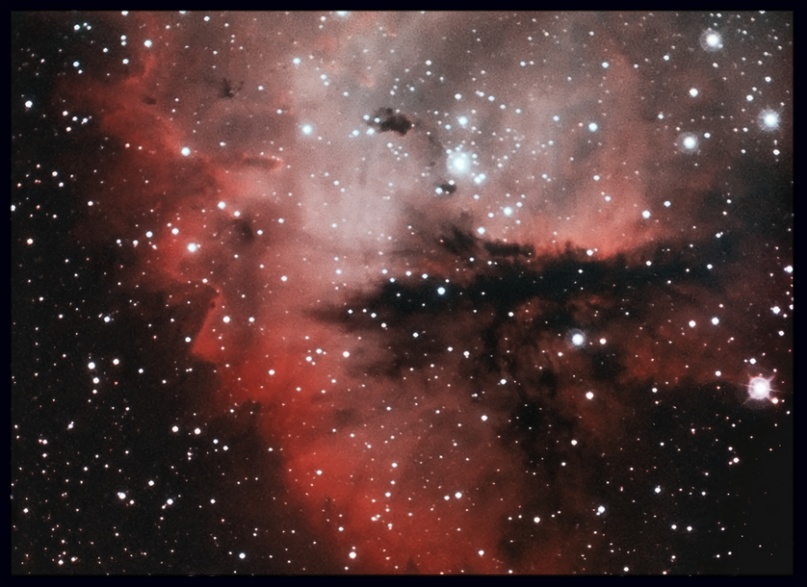|
|
Nebulae NGC 281 NARROWBAND BICOLOR |  | (CLICK REFRESH ON YOUR BROWSER IF IT DOESN'T APPEAR)
Equipment and exposition:
GSO RC 8" with Astro-Physics focal reducer
ATIK 314L with Starlight Usb filter wheel, Astronomik Filters 31,8
Guided with Starlight Lodestar off axis system
Neq6 Geoptik Modded
6 x 800 s and and 6 x 600 s in Ha Channel
5 x 800 s and 5 x 600 s in OIII Channel
Bicolor Technique (HA+OIII)
Processed with PixInsight ,Maximdl,Photoshop,DSS,DSS Live
SIte : Lusernetta, West Alps, Italy.
About this object:
NGC 281 is an H II region in the constellation of Cassiopeia and part of the Perseus Spiral Arm. It includes the open cluster IC 1590, the multiple star HD 5005, and several Bok globules. Colloquially, NGC 281 is also known as the Pacman Nebula for its resemblance to the video game character.
The nebula was discovered in August 1883 by E. E. Barnard, who described it as "a large faint nebula, very diffuse." The multiple star HD 5005, also called ?1, was discovered by S. W. Burnham. It consists of an 8th-magnitude primary with four companions at distances between 1.4 and 15.7 seconds of arc. There has been no appreciable change in this quintuple system since the first measurements were made in 1875.
The nebula is visible in amateur telescopes from dark sky locations. In his book Deep Sky Wonders, Walter Scott Houston describes the appearance of the nebula in small telescopes:[3]
There was a faint glow in the immediate vicinity of the multiple star, with an occasional impression of a much larger nebulosity...Its surface brightness was much less than that of M33 in Triangulum or NGC 205, the distant companion of the Andromeda galaxy.
|
|
|
|
|
|

